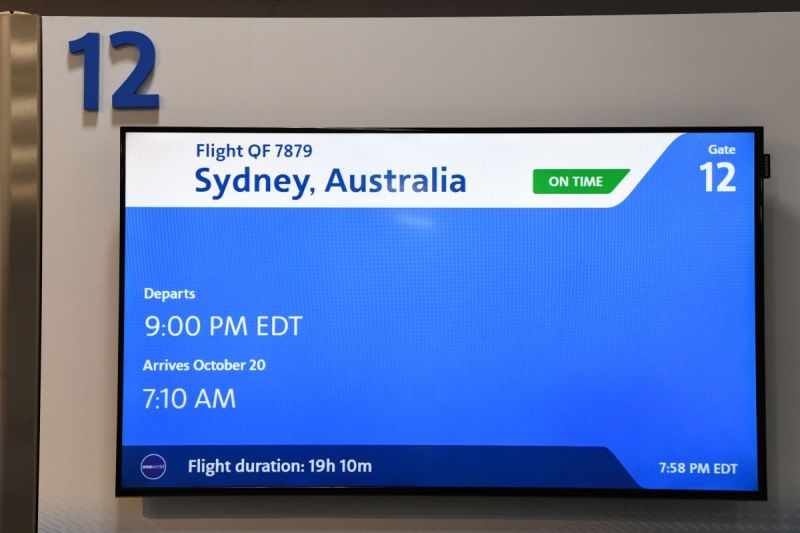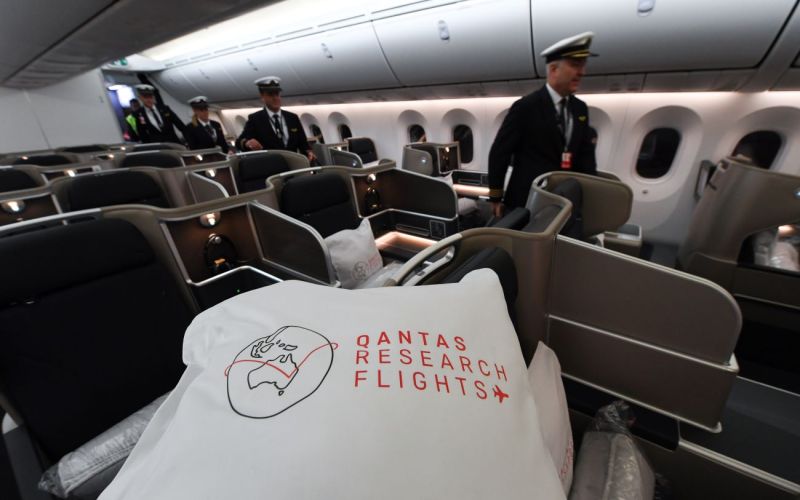
Delays, layovers, and long flights drive us absolutely crazy. Why? Not just the fact those dig into our vacation time, but they give us horrible jet lag. If you’ve ever tried to enjoy your time after a long flight, you know your body only wants to see the inside of the hotel room to sleep. If you’d like to do more sightseeing and less napping, our friends at the University of Sydney and the airline Qantas found ways for you to fight the effects of jet lag if you have a long flight ahead of you.
They released the results of a new study, conducted during test flights for Qantas’ Project Sunrise Program, which will connect Sydney with London and New York when it begins operations in 2025.
The study breakdown
Things took place on non-stop flights from New York and London to Sydney, Australia
Those flights to Australia are long, with the average service from New York to Sydney landing at 22 hours and 40 minutes — without any bumps. We know, our back hurts reading that, too.
The details of the study
- The study was done on the pilot, flight attendants, and passengers.
They thought of everyone, and whether you were part of the crew or a passenger, they wanted to know how these long flights affected you, and how to ease any discomfort.
- They monitored passengers’ pre-flight behaviors, in-flight routines, and post-flight feelings.
They didn’t only care about how you felt when you walked off the plane. The people in the study had to journal daily about how they felt the week before the flight, during the flight, and a whole two weeks after they landed.
- Everyone had to wear monitors.
It wasn’t like a scene out of The Matrix exactly. The people wore devices to track metrics like sleep and their general movements.

What the results pointed toward
This all sounds cool and interesting, but it’s the final results we care about. How to get over jet lag is the name of the game, and here is how to do it.
Adjusted the time frame right away
- The crew set the tone for when the passengers would eat, sleep, and be allowed to move about the cabin.
Instead of being served dinner and put to bed, passengers were served lunch and kept awake with lighting. This helped them adjust to the time they would be flying into.
Fed them the good stuff
While chili and chocolate might not be the combo you would hope for, these two foods are beneficial for people on long flights. The chocolate we get, especially if it’s dark chocolate. We’re not so sure about the chili (but we’re willing to test it out). Items like fish and chicken paired with fast-acting carbohydrates, and comfort foods like soups and milk-based desserts, were served. (The idea was to produce more tryptophan, which anyone who has celebrated Thanksgiving knows can make you sleepy.)
Make sure everyone moves around
If you’ve had to hop on even a two-hour flight with a toddler, you know having to sit still is not the best. There were set times for everyone to exercise to help with the side effects of the long flight.
The final perks
The lasting benefits of all of this were that the passengers reported reduced jet lag after and better cognitive function in the two days after the flight. That means more vacation time for everyone and less time walking around like a zombie waiting to adjust.
Qantas is changing how we think and feel about these long-haul flights. With more research to be done, their 2025 goal of non-stop flights from New York to Sydney and London to Sydney could be the beginning of what air travel could look like in the future. And it includes a whole lot less jet lag.



